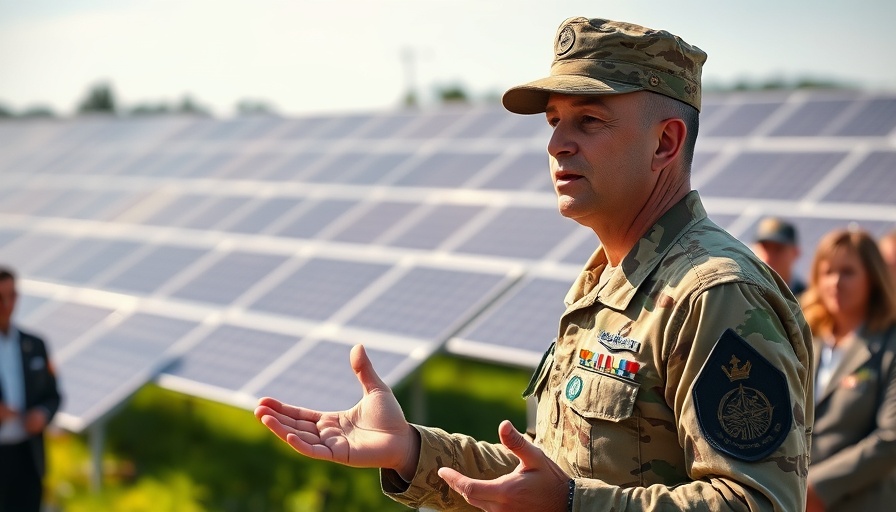
The U.S. Army's Commitment to Solar Energy
In an era where renewable energy is becoming a global necessity, the U.S. Army has set a precedent by actively pursuing solar energy solutions to not only reduce costs but also enhance its operational efficiency. As part of this ongoing mission, the Army’s initiative to go solar reinforces the importance of transitioning to sustainable energy sources that align with broader U.S. goals to mitigate climate change.
Why Solar Energy? Understanding the Benefits
Transitioning to solar energy has several distinct advantages, especially for a large and resource-intensive organization like the military. Firstly, solar energy has the potential to drastically reduce energy costs over time. For the Army, these savings can be redirected towards enhancing equipment and service capabilities. In a broader context, embracing solar energy aligns with increasing consumer demand for sustainable solutions, appealing to eco-conscious consumers who prioritize sustainability in their personal and business practices.
The Army's Roadmap: Current Projects
The Army operates multiple solar energy projects across various bases, contributing to its goal of achieving 100% renewable energy by 2025. Currently, installations range from solar panels on individual rooftops to large-scale solar farms designed to cover energy needs for entire installations. Notably, Fort Irwin, California, is at the forefront of these efforts, generating substantial breakthroughs in energy independence.
Community Impact: Local vs. Global Perspectives
By investing heavily in solar energy, the Army not only addresses its own requirements but also fosters community resilience. These projects often involve partnerships with local businesses and organizations, leading to job creation and investment in surrounding areas. The ripple effects could be significant, as community members, especially homeowners aged 30-65, may find inspiration to adopt solar solutions themselves, further aiding the transition to a sustainable energy landscape.
Future Insights: Solar Technology Trends
Looking ahead, innovations in solar technology promise to reshape energy consumption drastically. Emerging technologies, such as solar roofing and energy storage solutions, could further enhance the feasibility and attractiveness of solar energy for both military and civilian applications. As the Army progresses with its initiatives, insights gained can provide valuable information for homeowners and businesses that aim for lower energy costs and increased energy independence.
Counterarguments: Challenges in Transition
Despite the myriad benefits, transitioning to solar energy does not come without challenges. Critics often highlight the initial investment costs and potential resistance from entrenched interests in traditional energy sectors. However, with financing options such as power purchase agreements and government incentives, these barriers are slowly diminishing, showcasing a sustainable pathway forward.
Conclusion: The Call to Action for Homeowners and Businesses
With the Army leading the charge towards renewable energy, it serves as an inspiring model for homeowners and businesses alike. By recognizing the long-term advantages of solar energy, individuals can take proactive steps toward securing their financial futures. Interested parties should look into solar energy options available for their properties, potentially capitalizing on the support and resources provided through local and national programs. Making the switch could not only reduce energy costs but also contribute to a more sustainable world.
 Add Row
Add Row  Add
Add 



Write A Comment